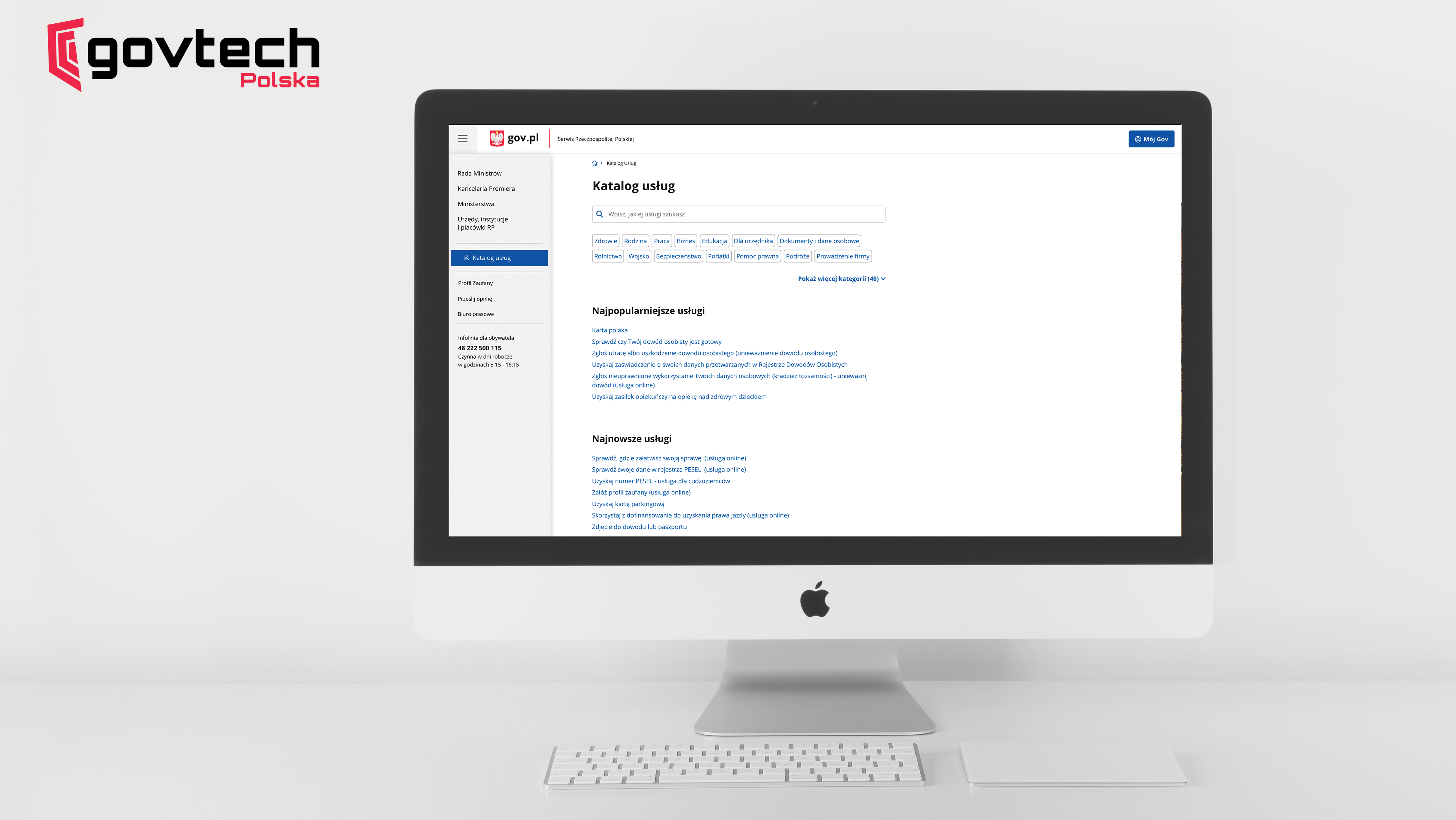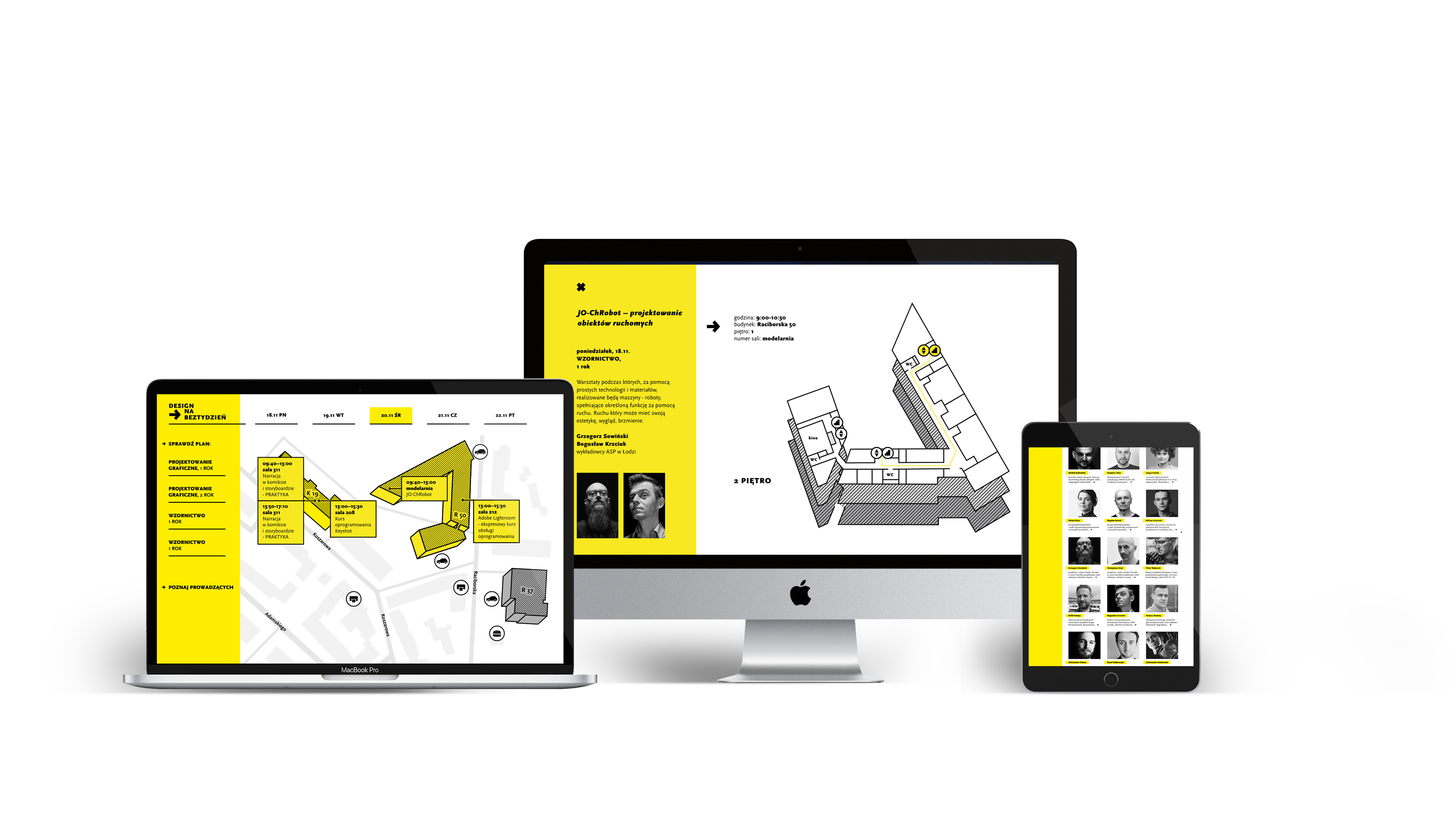ux design | UI design | iDI | usability tests | figma
About
Drawing inspiration from SmartHeal*, a wound dressing project featuring a pH sensor and an RFID communication system, which allows for monitoring pH values to assess wound condition and detect infection without removing the dressing, as well as from emerging technological advancements, this proposal introduces an application designed to assist in the treatment of chronic wounds. It is specifically tailored for nurses working with chronic wound care and is compatible with the smart dressings of the future.
My role:
Together with the second aspiring designer we were responsible for all aspects of research, design process from the concept to high-fi screens as well as conducting usability tests.


Design process
Desk research and interviews with nurses
We red about different types of chronic wounds and the specificity of nurses work with this case. We also red about SmartHeal project and the possibilities of novel technology of manufacturing the dressing with integrated sensor. This provided us to create user story mapping with distinction of two user scenarios: for the first patient, and for the permanent patient, enhancing the moments of washing hands and changing gloves.


Insights from the research
Working with other aspiring designer we analyzed the problem by reading about the types of wounds their specific treatment and interviewing with the nurses. Healing process of every chronic wound requires photo documentation which is usually done by nurses via their phones. They usually use two digital tools during the treatment. The classical dressing change process has two important moments – washing hands and using gloves: first for removing first dressing and second for putting on the new one. There is also a vast number of medicinal products and dressings on the market, dedicated to different types of wounds. Beginning nurses often find it difficult to make a proper diagnosis at the beginning of treatment and to remember the names of all the medicinal products and dressings they can use.
Chronic wound treatment process requires precise documentation, that allows nurses and patient see the progress in healing. The documentation is based mostly of photos, that usually nurses make via their phones. Photography should be done always in the same light, at the same distance – to to accurately document the state of the wound. This consumes the most of the time during the visit.
Nurses use specific markers-stickers to measure the size of the wound to be able to see the real size change.
To correctly classify the type of wound, it is necessary to consider not only its size and location, but also its depth, color, amount and color of exudate, type of surrounding tissue, type of wound bed surface and many other parameters. This is particularly difficult and time-consuming for beginning nurses.
Our high level goals were to:
1. Implement a mobile app to the process pf changing dressing without causing additional hand washing and a pair of gloves.
2. Assistance in proper wound measurement and documentation.
3. Help beginning nurses with the proper diagnosis and finding the best medicinal products for a specific case.
Persona
Proposed flow
We proposed two flows: one for the first visit and another for follow-up visits during treatment. In both cases, the mobile tool fits into the dressing change process and doesn't require an extra pair of gloves. During follow-up visits, the dressing can be scanned with an RFID sensor to track important healing parameters like exudate, skin pH, biofilm, and temperature. After applying the dressing, the nurse scans it with her phone, automatically adding all the documentation and a signature to the app.
We plan to use artificial intelligence to analyze images, helping the app automatically describe the wound (size, depth, color) based on a photo, that will assist the diagnosis. We also wanted to use beacon technology to automatically log into the patient’s profile when entering their home.
Low-fidelity prototyping
During low-fidelity prototyping, we decided to focus on facilitating the photo documentation and measurement of wound size. Adding a wound by placing it on a human mock-up, taking a picture of the wound that, thanks to AI, helps determine the dimensions, color, and characteristics of the skin.
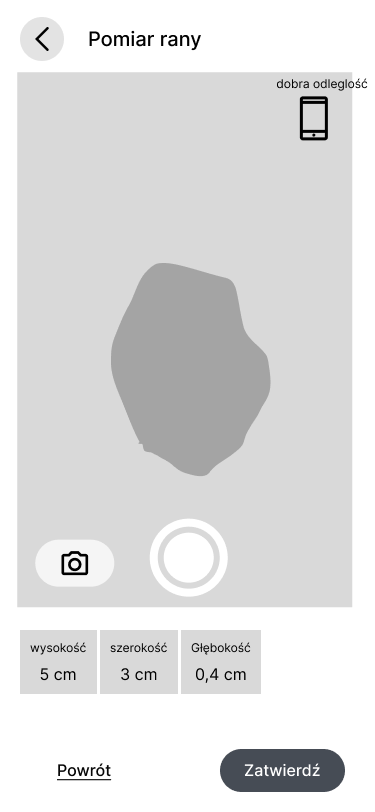
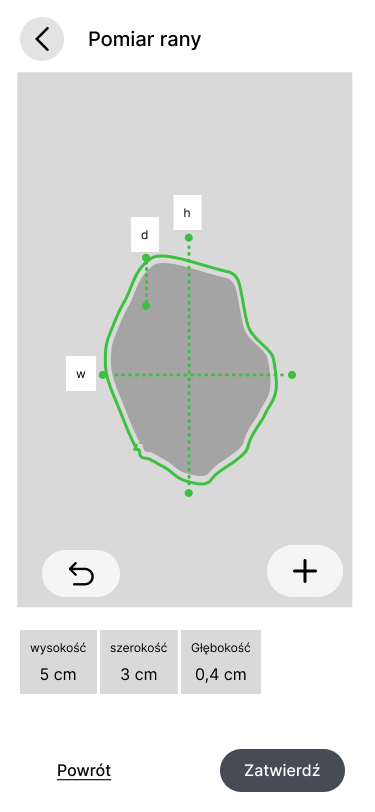




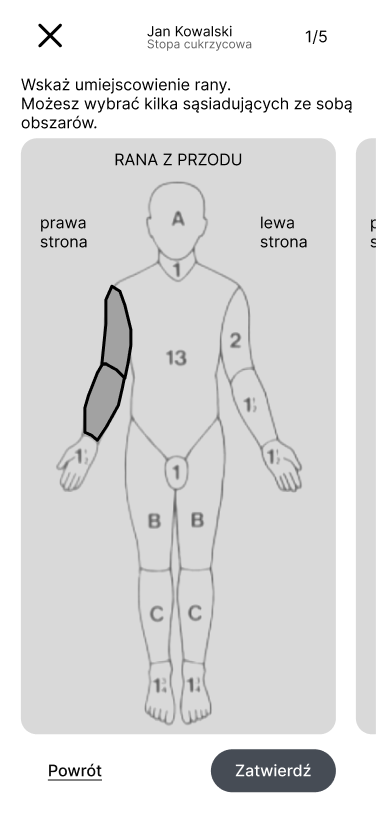


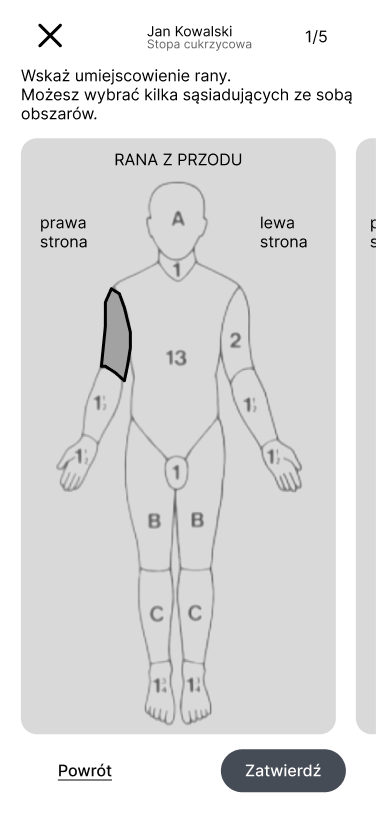
High-fidelity prototyping
Due to the time limitations of the student project, we decided to design two most important user flows:
1. For a new patient (which includes entering the entire wound documentation based on the photo)
2. For a permanent patient (where it is possible to scan the dressing to see the parameters: PH, exudate, bacteria, temperature, oxygen and glucose).
Flow 1. New patient – wound documentation
Flow 2. Permanent patient – scanning the old dressing and changing for the new one
Usability tests with IDI
Having prototype we conducted 3 usability tests with nurses working with chronic wounds. The participants were asked to complete two tasks based on mentioned flows.




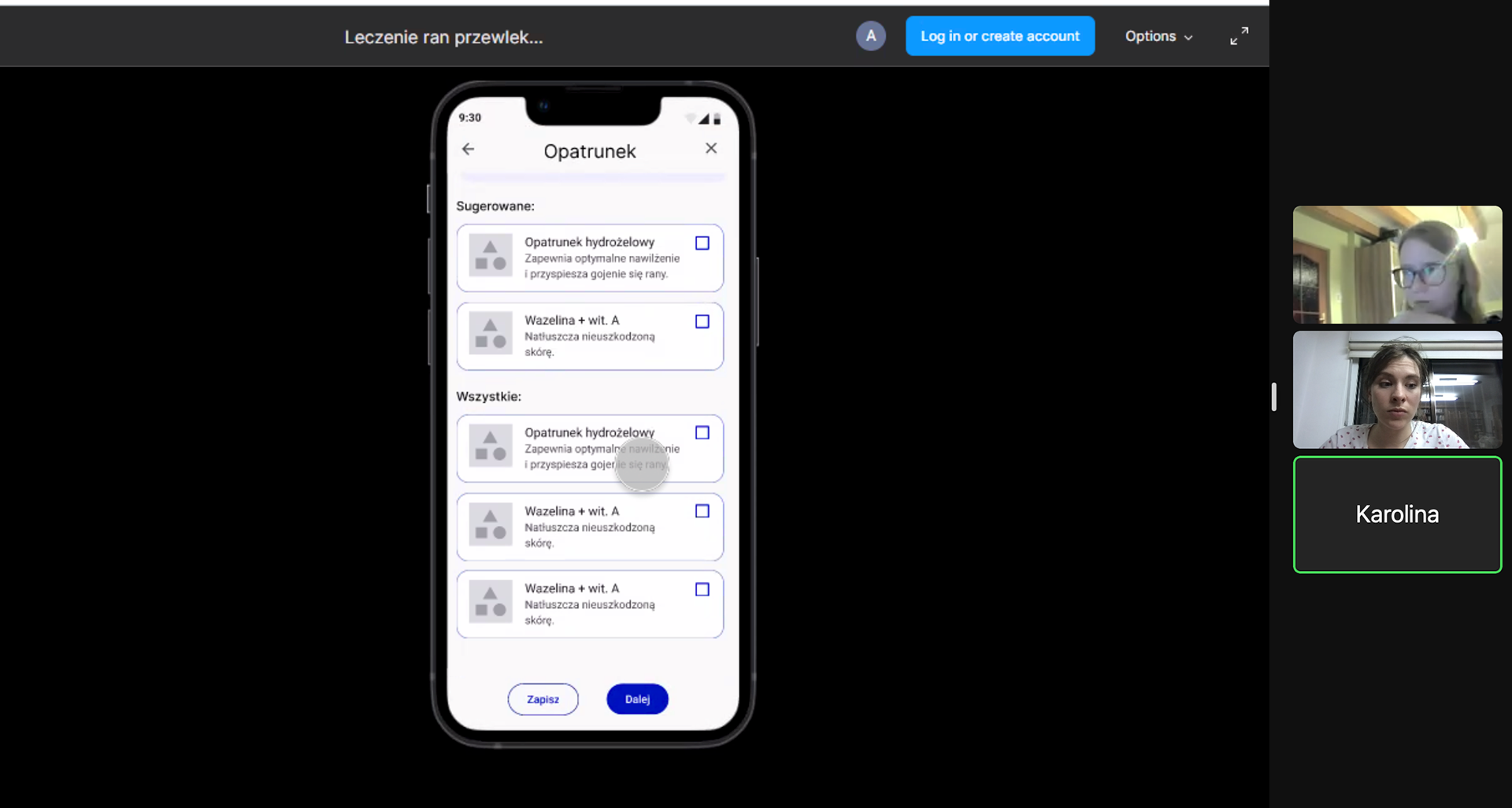
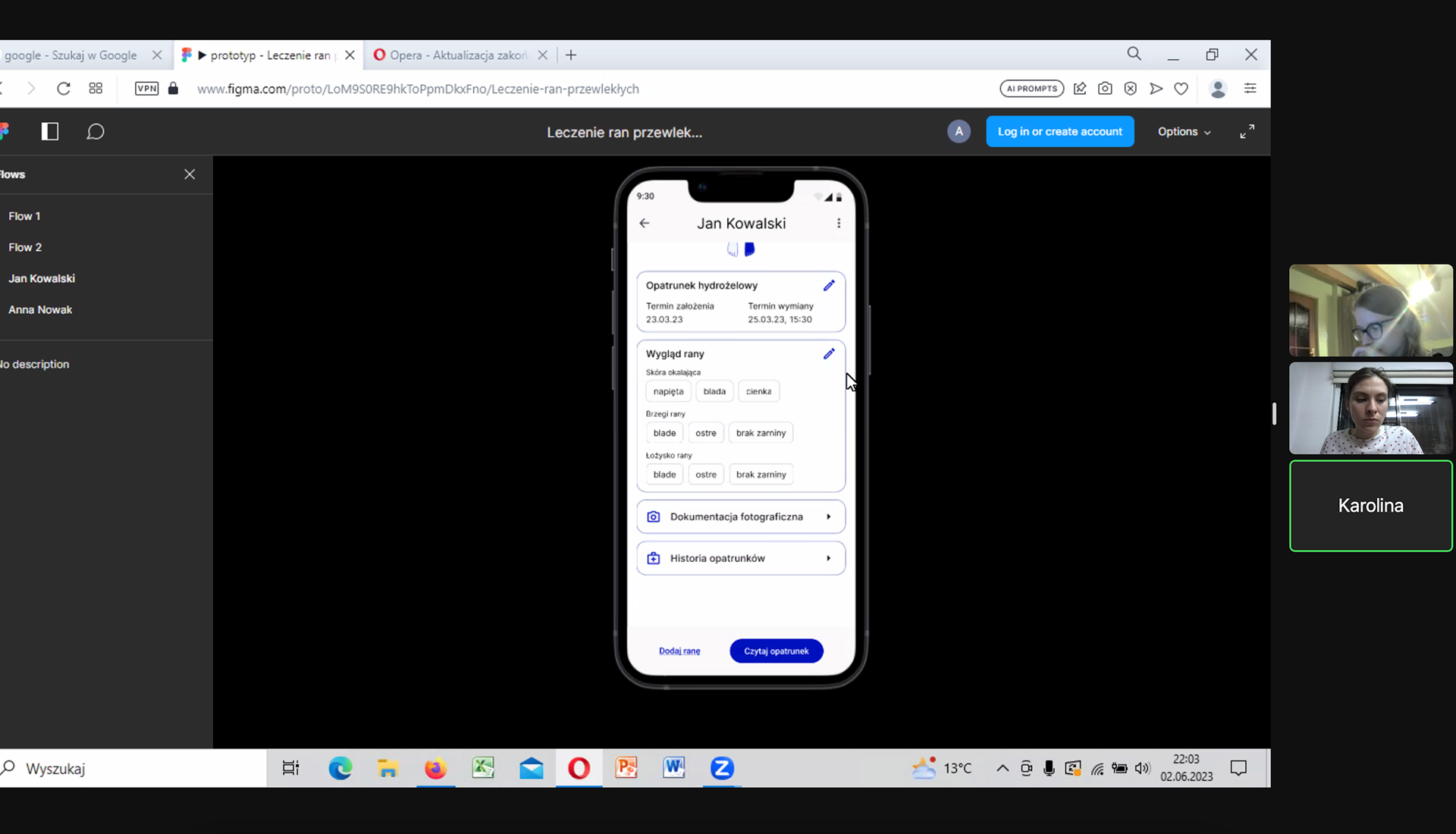

Conclusions from tests
The idea showcased on prototype and tests found that the app’s design compatible with the SmartHeal dressing meets their general current needs and it is worthy to develop it.
"It would be useful for me."
Next steps to consider
Nurses liked the idea of using artificial intelligence for image analysis to automate documentation. They really appreciated having one tool for both photo and medical documentation, that tracks also the wound parameters.
Users mentioned that they missed being able to contact patients through the app. They asked whether patients could measure wound parameters and change dressings on their own, as this would reduce unnecessary home visits for nurses.
This gave us a great idea for a new solution. Since the main goal of the project was to help nurses diagnose faster and reduce their workload from too much photographic documentation, the idea that patients could handle dressing their wounds and tracking their healing progress was a big insight for us. We believe that giving patients more independence is especially important as society ages and healthcare resources become more limited.
semester project 2023
Jan Matejko Academy of Arts and Design
cooperation: Karolina Grabowska
supervision: Kamil Kamysz and Patryk Szymański
Jan Matejko Academy of Arts and Design
cooperation: Karolina Grabowska
supervision: Kamil Kamysz and Patryk Szymański

